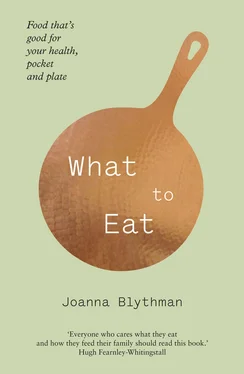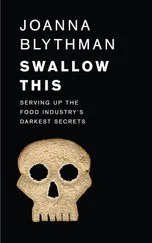• Cavolo nero lends dark green colour and adds its interesting iron-tinged flavour to hearty winter broths with root vegetables and pulses, such as Scotch broth and white bean soup.
• Thinly sliced Brussels sprouts make a less predictable winter gratin when baked in a white sauce with fried bacon lardons and chunks of blue cheese.
• Sauerkraut (sour, fermented cabbage), bought in a jar, can sharpen and jazz up otherwise plain meals involving cooked ham or sausage, along the lines of the celebrated Alsatian choucroute garni.
Are brassicas good for me?
Brassicas offer a truly impressive package of health benefits. The nutritional profile varies from one to the other. Red cabbage, for instance, has much higher vitamin C levels than white cabbage, but collectively these vegetables share many positive nutritional attributes.
They are loaded with vitamin C, which is protective against many diseases and supports the immune system; vitamin K, which is important for blood clotting and bone health; soluble fibre, which slows down the rate at which sugar is released into the bloodstream; and folate, which helps prevent birth defects. In addition to all this, brassicas contain a collection of useful minerals and phytochemicals, such as sulforaphane and indoles, which are thought to have a strong anti-cancer action, and have an anti-inflammatory effect, which is believed to help reduce the risk of heart disease and stroke.
If you want to lessen your exposure to pesticide residues, choose organic brassicas. If this isn’t an option, discard more of the outer leaves than you usually would as they are more likely to trap residues from spraying.
How are brassicas grown?
Brassicas are grown all over the UK and particularly thrive in coastal areas. Most production is centred on Lincolnshire, Cornwall, Lancashire, Kent and the east of Scotland. The robust, hardy brassicas – cabbage, cauliflower, romanesco, kale, broccoli and Brussels sprouts – are usually grown in open fields, although they can be started off in an open, unheated polytunnel then transplanted for an early crop. More tender, leafy brassicas, such as pak choy, are commonly grown in greenhouses or polytunnels. Some brassica growers specializing in indoor production are now using hydroponic methods, where the vegetables are grown, not in earth, but in a soil substitute and nourished with water and nutrients.
Are brassicas a green choice?
Since brassicas grow well in the UK, there is never any need to eat the imported sort. These come from further afield, using up lots of oil in transport, so they leave a heavier carbon ‘foodprint’ than home-grown. Most imported brassicas come from dryer countries such as Spain where water usage in crop production has put further pressure on already depleted water resources.
Brassicas are very susceptible to insects, pests and diseases, so unless they are organically grown, they are likely to have been given repeated pesticide treatments. These can pollute soil and water and have a negative impact on wildlife. Non-organic British brassica growers are trying to reduce their dependency on pesticides, not least because several products they relied on are being phased out or restricted by the European Union. They are using various techniques to minimize spraying as well as regular crop rotations (not growing the same crop in the same place for too long) to prevent any pest build-up in the soil. That said, many conventional brassica growers still use several controversial pesticides that most consumers would probably prefer were not used to grow their food.
Polytunnel and glasshouse production of brassicas can raise a number of environmental issues too (see TOMATOES/Are tomatoes a green choice?).
Where and when should I buy brassicas?
British-grown brassicas are either in season or available from store as below. If you see these vegetables at other times, they are likely to be either imported or grown in heated glasshouses.
Cabbage: all year
Cauliflower: all year, best in summer
Spring greens: March to June
Brussels sprouts: October to March
Broccoli (calabrese), romanesco: June to October
Purple sprouting broccoli: January to April
Chinese greens: March to December
Kale: September to March
Kohlrabi: July to February
Radishes: March to August
THE SMELL OF SCHOOL DINNERS
Although cabbage and cauliflower have long featured in the British diet, unlike other cultures, we rarely celebrate them. Indeed, many people have an antipathy to them. Koreans go mad for pickled fermented cabbage, kimchee. Eastern and central Europeans celebrate sauerkraut. Say cabbage or cauliflower to British people, and you are more likely to hear remarks about the sulphurous school dinner smell of over-boiled vegetables.
In recent years broccoli, which was rarely eaten in the UK until the 1980s, has become the country’s favourite brassica and a whole range of leafy vegetables once seen as oriental, and only available in Chinese supermarkets, is now being cultivated in the UK. As sales of these newer vegetables have boomed, production of the more traditional cabbages and cauliflower has declined. The area in the UK now planted with these crops has shrunk substantially, partly as a reflection of reduced demand, and also as a consequence of supermarkets paying growers unsustainably low prices for crops, which they then sell with a very healthy profit margin. This is a great pity, because, thoughtfully cooked, these are vegetables any nation should be proud of. Recently both cauliflower and cabbage (the latter often reinvented as ‘seasonal greens’) have earned the patronage of top chefs. Combined with the growing interest in local food, the fortunes of these two familiar vegetables may yet revive.
Will brassicas break the bank?
Since vegetables such as purple sprouting broccoli, spring greens and cavolo nero have become fashionable and calabrese has been hailed as a ‘superfood’, their price in supermarkets has increased noticeably. But in markets, farm shops and independent greengrocers, you can usually buy them for less, with a price tag that more accurately reflects the current wholesale price.
Probably because fewer people can think of something to do with them, radishes, kale and kohlrabi are notably cheap, so they are particularly good buys.
Hard white and red cabbages keep really well in the fridge, so ignore use-by dates that suggest otherwise. Although other brassicas are best eaten nice and fresh, there are ways to rescue those that haven’t yet started to yellow, but are nevertheless past their prime. You can strip off and discard the floppier outer leaves of loose-headed cabbages and sprouts and use just the heart. Few people will notice that cauliflower isn’t as fresh as it might be when it’s cooked in a curry. Cut out any hard ribs and stems on brassicas that are green and leafy, such as spring greens and kale, wilt them in salted, boiling water, then drain them and dress with olive (or nut) oil and lemon juice or a splash of vinegar, in the style of that Greek staple, horta vrasta.
Конец ознакомительного фрагмента.
Текст предоставлен ООО «ЛитРес».
Прочитайте эту книгу целиком, купив полную легальную версию на ЛитРес.
Безопасно оплатить книгу можно банковской картой Visa, MasterCard, Maestro, со счета мобильного телефона, с платежного терминала, в салоне МТС или Связной, через PayPal, WebMoney, Яндекс.Деньги, QIWI Кошелек, бонусными картами или другим удобным Вам способом.












